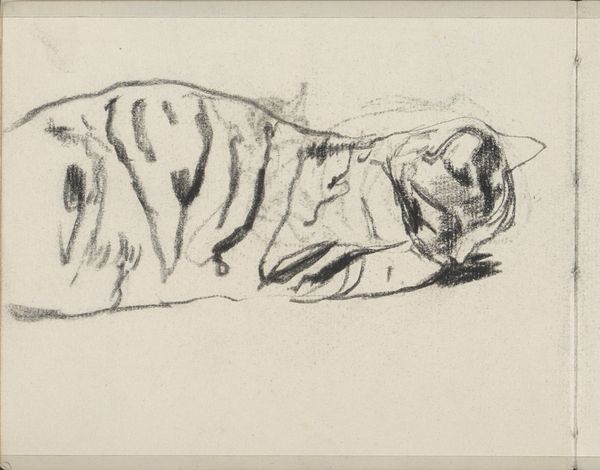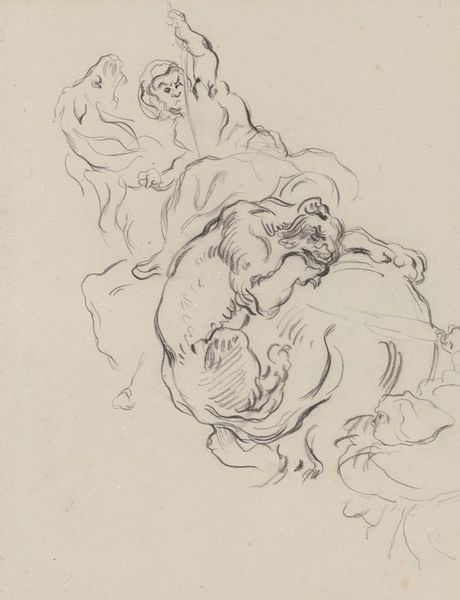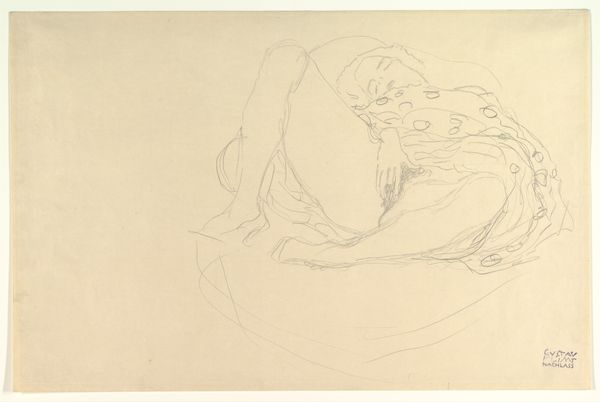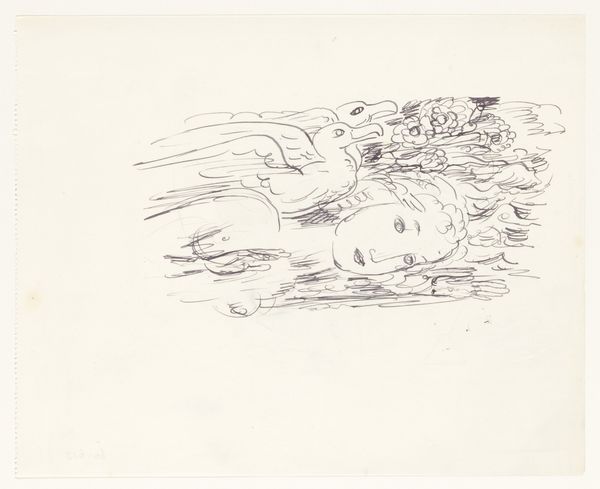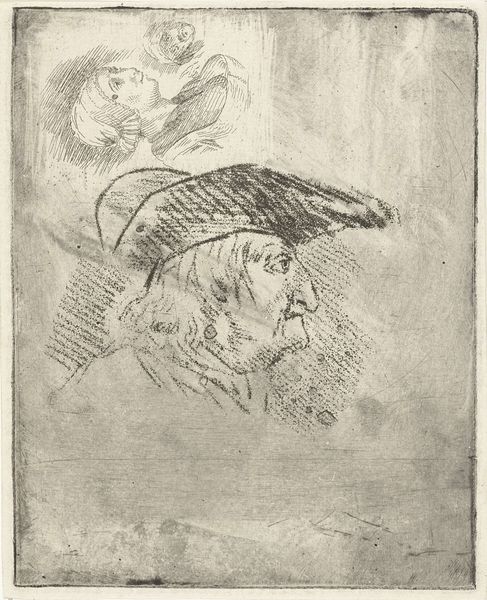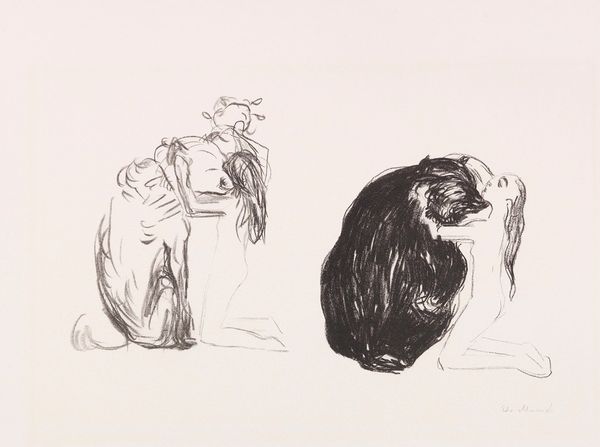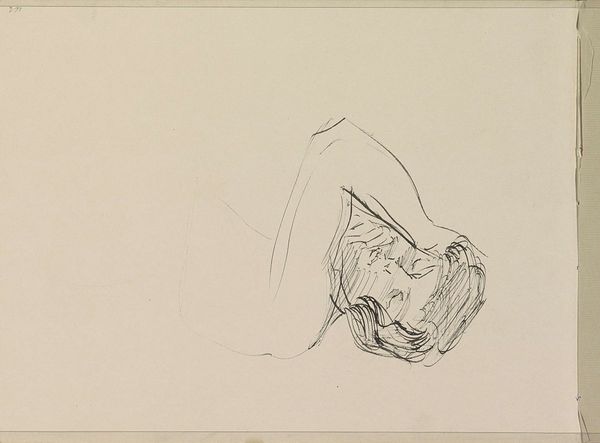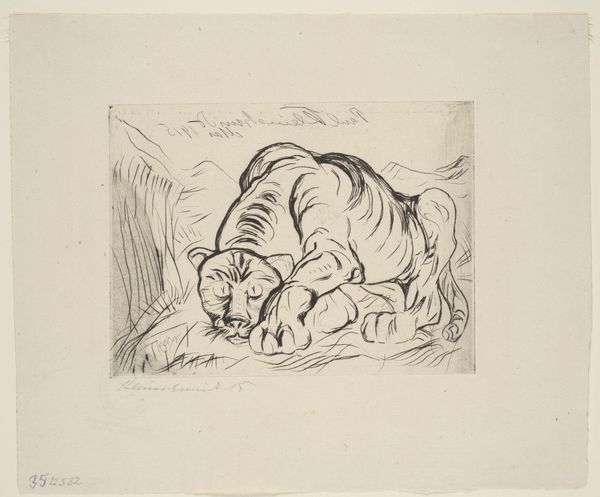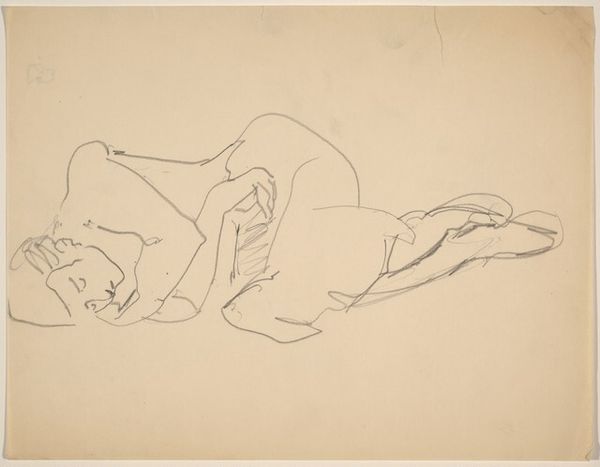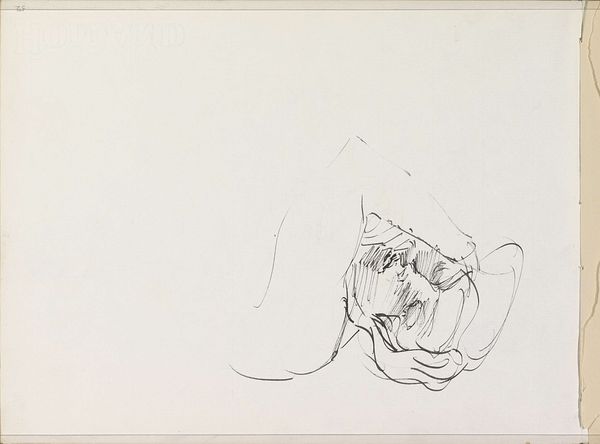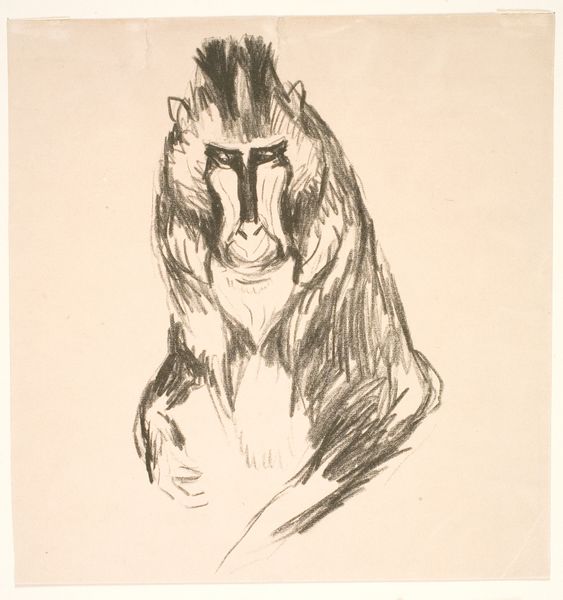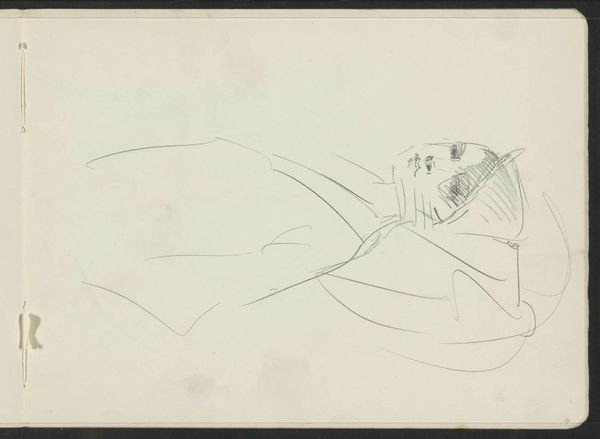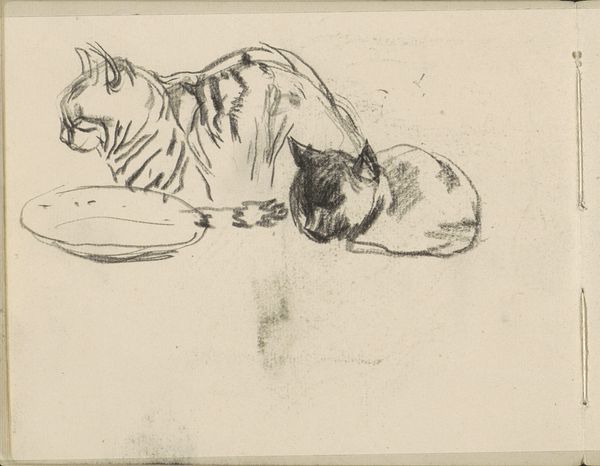
drawing, lithograph, print, paper, pencil
#
portrait
#
drawing
#
lithograph
# print
#
paper
#
pencil drawing
#
pencil
#
symbolism
Dimensions: 311 × 385 mm (image); 481 × 651 mm (sheet)
Copyright: Public Domain
Editor: Here we have Edvard Munch's lithograph, "The Tiger," made between 1908 and 1909. The drawing seems almost unfinished, raw. It’s the texture of the pencil on the paper that really jumps out. What can you tell me about it? Curator: Well, let's consider the means of production. It's a lithograph, which involves a very specific type of labor to create the printing matrix, often industrial processes involving specific materials and specialized craftsmen. This contrasts sharply with the seeming spontaneity of the drawing. How do those seemingly contradictory forces work together? Editor: I guess it's easy to see it as just a drawing, but the process involved to make it reproducible, to create an edition... that changes my perspective. Was Munch thinking about the market when he made this? Curator: Exactly! The print medium suggests that, and also speaks to ideas around value, class, and access. Also consider the historical context: This piece comes after Munch’s nervous breakdown. Does the raw, unfinished quality of the work become more compelling considering his biography and the economic conditions surrounding artistic production at this time? Editor: Definitely, it feels like the material process is deliberately highlighting his state of mind. You can see the artist, in his own hand, processing trauma, but for an audience. It's both vulnerable and quite strategic. Curator: Yes, that duality, how private pain intersects with public consumption... Consider how the physical labor, the material constraints of the printmaking process, shapes and perhaps even mediates that expression. What does the commodification of inner turmoil say about society at the time, and today? Editor: I hadn't considered the labor and the commodification of feeling, but looking closer, I can't unsee it now. It shifts my focus from the subjective expression to its position in the market and the conditions of its creation. Curator: Precisely. By examining the artwork through this lens, we start to question assumptions and deepen our comprehension, seeing it not just as personal expression but as the result of cultural and economic systems.
Comments
No comments
Be the first to comment and join the conversation on the ultimate creative platform.
